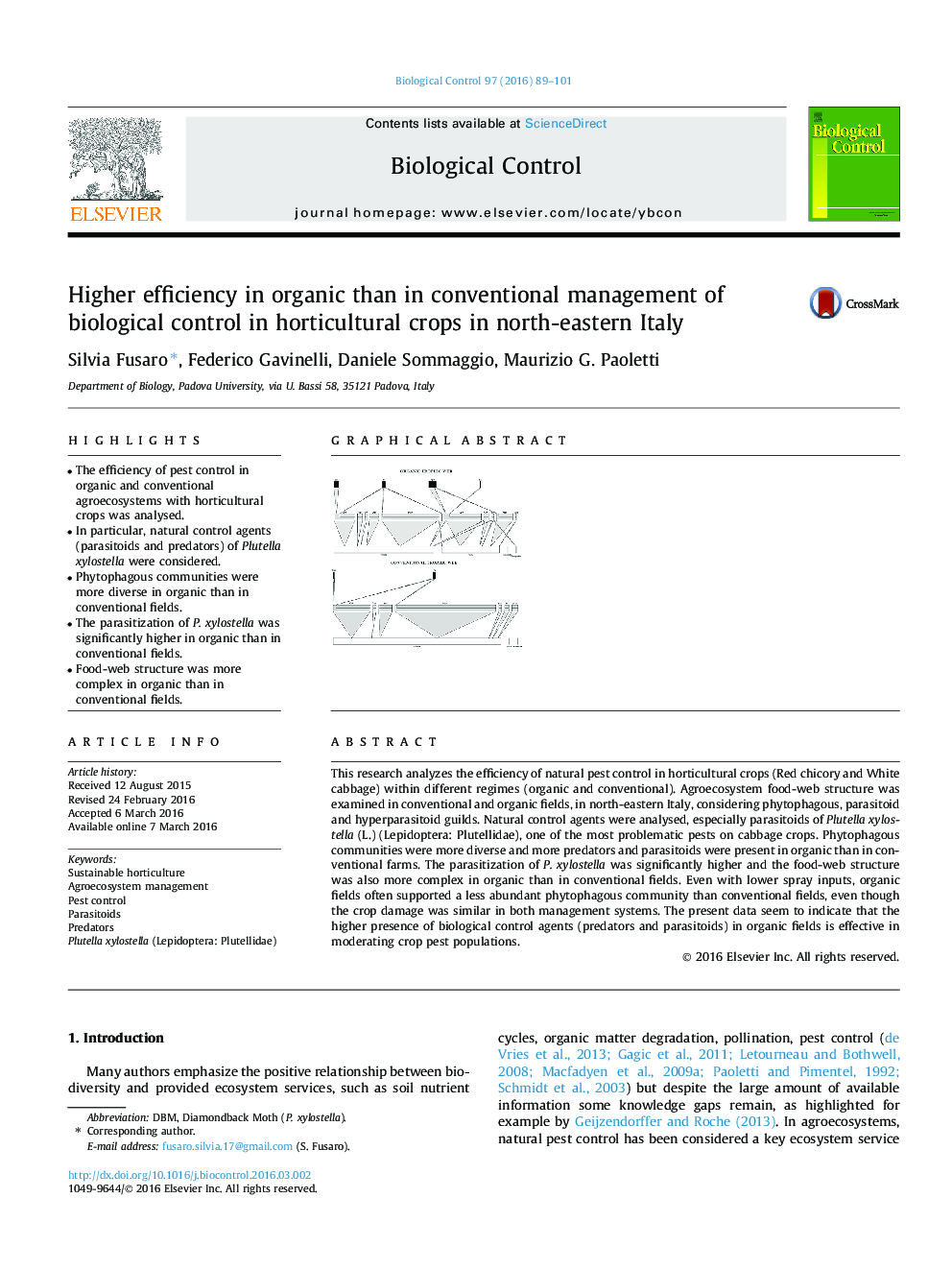| Article ID | Journal | Published Year | Pages | File Type |
|---|---|---|---|---|
| 4503690 | Biological Control | 2016 | 13 Pages |
•The efficiency of pest control in organic and conventional agroecosystems with horticultural crops was analysed.•In particular, natural control agents (parasitoids and predators) of Plutella xylostella were considered.•Phytophagous communities were more diverse in organic than in conventional fields.•The parasitization of P. xylostella was significantly higher in organic than in conventional fields.•Food-web structure was more complex in organic than in conventional fields.
This research analyzes the efficiency of natural pest control in horticultural crops (Red chicory and White cabbage) within different regimes (organic and conventional). Agroecosystem food-web structure was examined in conventional and organic fields, in north-eastern Italy, considering phytophagous, parasitoid and hyperparasitoid guilds. Natural control agents were analysed, especially parasitoids of Plutella xylostella (L.) (Lepidoptera: Plutellidae), one of the most problematic pests on cabbage crops. Phytophagous communities were more diverse and more predators and parasitoids were present in organic than in conventional farms. The parasitization of P. xylostella was significantly higher and the food-web structure was also more complex in organic than in conventional fields. Even with lower spray inputs, organic fields often supported a less abundant phytophagous community than conventional fields, even though the crop damage was similar in both management systems. The present data seem to indicate that the higher presence of biological control agents (predators and parasitoids) in organic fields is effective in moderating crop pest populations.
Graphical abstractFigure optionsDownload full-size imageDownload as PowerPoint slide
